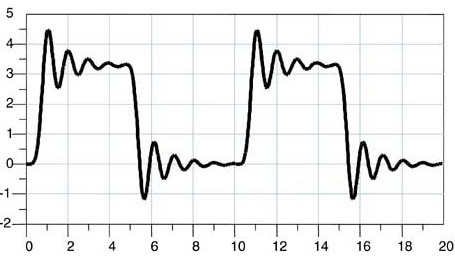
Support Team
Feedback:
support@nextpcb.comBroadly speaking, signal integrity refers to all the problems caused by interconnects in circuit design. It mainly studies how the electrical characteristics of interconnects interact with the voltage and current waveforms of digital signals, which affects product performance. Mainly in the impact on timing, signal ringing, signal reflection, near-end crosstalk, far-end crosstalk, switching noise, non-monotonic, ground bounce, power bounce, attenuation, capacitive load, electromagnetic radiation, electromagnetic interference.
The root cause of signal integrity problems is the reduction in signal rise time. Even if the wiring topology does not change, if an IC chip with a small signal rise time is used, the existing design will be in a critical state or stop working.
Let's talk about several common signal integrity issues.
1. Reflection:
Waveform distortion caused by signal reflection. It looks like ringing, take out the board you made, and measure various signals, such as clock output or high-speed data line output, to see if there is such a waveform. If so, then you should have a perceptual understanding of the signal integrity problem, yes, this is a signal integrity problem.
Many hardware engineers will connect a small resistor to the clock output signal. As for why, many of them are unclear, they will say that many mature designs have been done. Perhaps you know, but many people can't tell the role of this small resistor, including many hardware engineers with three or four years of experience, is it amazing? But this is indeed a fact, I have encountered a lot. In fact, the role of this small resistor is to solve the problem of signal reflection. And as the resistance increases, the ringing will disappear, but you will find that the rising edge of the signal is no longer steep. This solution is called impedance matching. Oh, right, you must pay attention to impedance matching. Impedance plays an extremely important role in signal integrity problems.
2. Crosstalk:
If you are careful enough, you will find that sometimes there is no output signal for a certain signal line, but when measuring, there will be a regular waveform with a small amplitude, just like a signal output. At this point, you measure the signal line adjacent to it to see if there is a similar law! Yes, if the two signal lines are close together, it will usually be. This is crosstalk. Of course, the waveform on the signal line affected by crosstalk is not necessarily similar to the adjacent signal waveform, and does not necessarily have obvious laws, and more is expressed as a noise form. Crosstalk has always been a headache in today's high-density boards. Because of the small wiring space, the signal must be close, so you have to control it but can't eliminate it. For a signal line that is crosstalked, the interference of the adjacent signal is equivalent to noise for him.
The size of the crosstalk is related to many factors on the board, not just because of the distance between the two signal lines. Of course, the distance is the easiest to control, and the most common way to solve crosstalk, but not the only way. This is also a place that many engineers are easily misunderstood. For a more in-depth discussion, I will launch them in subsequent articles.
3. Track collapse:
Noise is not only present in the signal network, but also in power distribution systems. We know that there is inevitably an impedance in the path between the power supply and ground, unless you can make everything on the board a superconductor. Then, when the current changes, the voltage drop is inevitably generated. Therefore, the voltage actually sent to the power supply pin of the chip is reduced, sometimes it is greatly reduced, just as the voltage suddenly collapses, which is the track collapse. Track collapse can sometimes cause fatal problems that can affect the functionality of your board. High-performance processors integrate more and more gates, faster switching speeds, consume more switching currents in less time, and can tolerate less and less noise. At the same time, it is increasingly difficult to control noise. Because of the demanding requirements of high-performance processors for power systems, it is becoming more and more difficult to build lower-impedance power distribution systems. You may have noticed that it is impedance, and understanding impedance is the key to understanding signal integrity issues.
Signal integrity issues are relatively broad. Here are just a few examples. I hope this article will give you a preliminary understanding of signal integrity.

Still, need help? Contact Us: support@nextpcb.com
Need a PCB or PCBA quote? Quote now